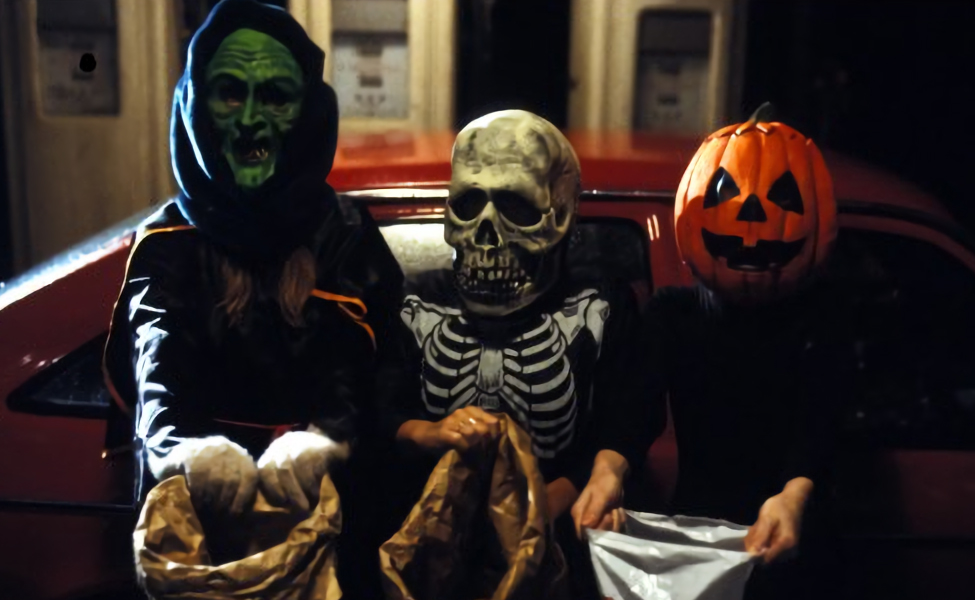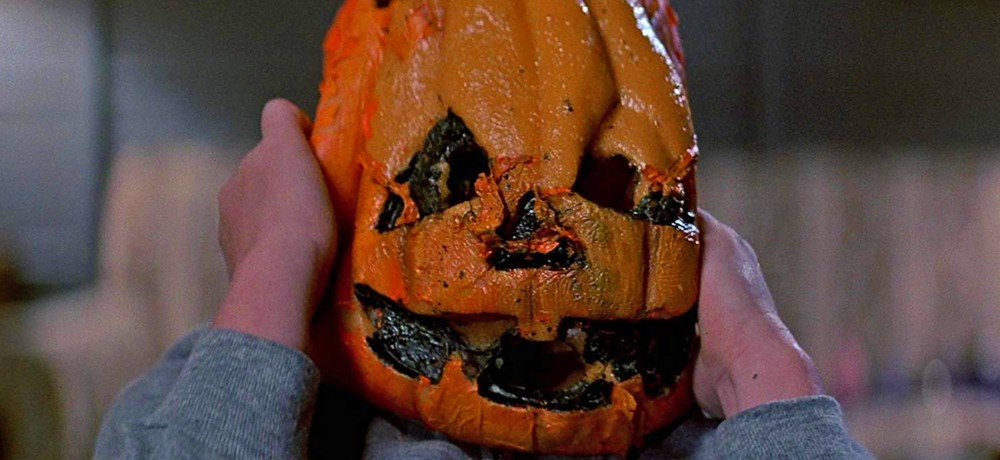In 1982, genre fans could score themselves a Don Post-created mask from Halloween III: The Season of the Witch for a mere $25.00 (those same vintage masks now go for roughly $500.00 in the collector space, which means we’re thankful for Trick Or Treats Studios’ current and affordable reissues).
In today’s ‘Rewind’ article (a new series in which we’ll take a look back at vintage coverage and moments of and on the Halloween franchise), writer Aljean Harmetz’s October 16, 1982 piece in The New York Times focuses on mask-maker Post, who talks those original mass-produced Halloween III masks, as well as Universal Pictures’ at-times unique marketing approach to the R-rated film (which interestingly enough included inviting children – who’d colored newspaper advertisements of the murderous Silver Shamrock masks – to the studios’ backlot for a mask-making demo), and a whole lot more.
So gather around, kids. The big giveaway is at 9. And don’t forget to wear your masks.
___
HALLOWEEN III MASKS TO SCARE UP SALES

The three Halloween masks that form an integral part of the plot of a new movie, Halloween III: Season of the Witch, will also be an adjunct to the merchandising of the movie, which opens next Friday in 1,250 theaters across the country.
The glow-in-the-dark sunken skull, the menacing orange Day-Glo pumpkin head and the lime-green latex witch mask that a diabolical mask maker in the movie hopes will make millions of children his prisoners will be offered for use in the real world this Halloween.
Because the three masks will retail for about $25 each, it is doubtful that many 10-year-old trick-or-treaters will wrap themselves in the witch’s dark blue-gray cowl or don the clammy black vinyl of the skeleton. ”Our masks are for an adult market, 13-to-35-year olds,” said Don Post, whose father was one of the creators of the latex mask industry nearly 45 years ago. Although Don Post Studios was successful with masks of monsters from Universal movies in the 1960’s, Mr. Post dates the dramatic realization that there was money to be made from intertwining masks and movies to 1970, when 20th Century-Fox decided to license masks for a then-three-year-old movie, Planet of the Apes.
”The results were awesome,’‘ said Mr. Post.

Darth Vader a Big Hit
But they were nothing compared to the sales of masks of the characters from Star Wars, the 1977 movie. More than $3 million worth of the Post Studios’ black plastic masks of Darth Vader alone have been sold at prices ranging from $30 to $40.
The problem with making character masks from movies is that ‘‘they only become appealing to the public after audiences have identified with the movie,” said Mr. Post. ”Buyers for stores have no imagination. No one wanted Star Wars masks until the week after the movie came out. Then we were deluged.”
According to Mr. Post, the masks from Halloween III are the first to be exactly the same as those featured in a movie. In fact, they were made from the same molds. ”Because the masks are so significant to the movie, they could become a cult item, with fans wanting to wear them when they go to see the movie,” he said.
Universal is sponsoring radio promotions involving the masks in cities around the country. In southern California, for example, children who color advertisements of the masks can accompany their parents on the Universal Studio tour free. And on the tour, Don Post will give mask-making demonstrations.

A $40 Million Halloween
The $300,000 Halloween, directed by John Carpenter and produced by Debra Hill, is the most successful independently distributed movie of all time, having sold $40 million worth of tickets in the United States. Halloween III, which cost $4.6 million, including $2 million in overhead paid to Universal, does not use the same plot as Halloween and Halloween II about a knife-wielding maniac. This film focuses on Dan O’Herlihy as a demented toy maker rather than on Jamie Lee Curtis as a frightened baby sitter.
”It’s a pod picture, not a knife picture,” said Miss Hill, who chose to name the town in which the grisly happenings take place at Santa Mira, in honor of the town in Don Siegel’s classic 1956 pod movie Invasion of the Body Snatchers. The tie-in of masks and movie was an accident born of necessity. ”We didn’t exactly have a whole lot of money for things like props,” said Miss Hill. ”So we asked Post, who had provided the shape mask for the earlier Halloween movies, if we could work out a deal. He said, ‘Don’t give me money. Give me the merchandising rights and we’ll share the profits.’ ”
The skull and witch are adaptations of standard Post Studios masks, but the jack-o’-lantern was created for Halloween III. ”Every society in every time has had its masks that suited the mood of the society,” said Mr. Post, ”from the masked ball to clowns to makeup. People want to act out a feeling inside themselves – angry, sad, happy, old. It may be a sad commentary on present-day America that horror masks are the best sellers.”

Big Item for Collectors
While the less expensive Post Studios masks, priced at $8.50, are sold in toy stores, most of the $20-and-up movie tie-in masks are available only at such places as costume and magic shops and theme parks. Although 70 percent of all masks are sold during the weeks before Halloween, Mr. Post has a file of more than 1,000 letters from people who are mask collectors, some specializing in movie monsters, some in specific films such as Star Wars.
Post Studios has, of course, had its failures – Star Trek among them. ”The characters were too human,” said Mr. Post. ”We tried to do Spock several times, and it never worked out. Successful characters for masks have to be bigger than life. Monsters are bigger than life.” Perhaps for the same reason, he added, the sale of Annie wigs have been disappointing.
What Mr. Post calls the ”Rolls-Royces” of generic masks – werewolves, witches, vampires – sell perhaps 2,000 a year. A successful licensed character like Frankenstein’s Monster or the Creature from the Black Lagoon can sell 6,000 to 20,000. Yoda, from The Empire Strikes Back, is now the second-best-selling mask, behind Darth Vader; but probably not for long.
On long tables in the Post factory -with the acrid smell of ammonia thick as soup and jets blowing 110-degree air at plaster molds – thousands of E.T. heads are being poured, trimmed, painted, bagged, and boxed. The difficulty in designing an E.T. mask, the length of the head, has been solved by a rigid plastic strip, and Mr. Post expects 70,000 of the over-the-head latex E.T. masks to be in stores by Christmas.